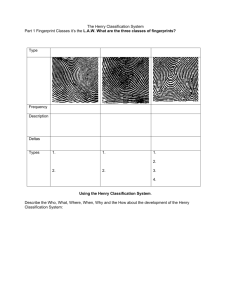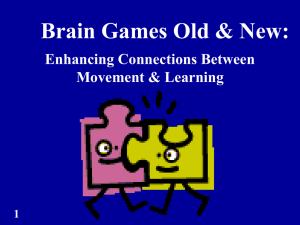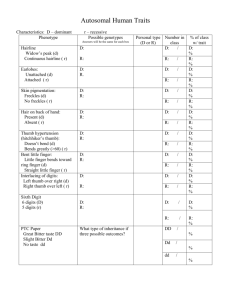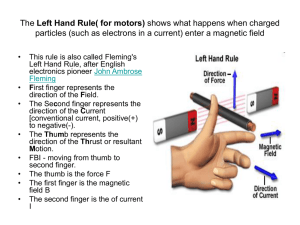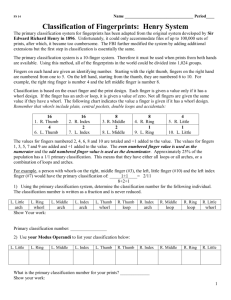The Normal Hand Exam - PracticalPlasticSurgery.org
advertisement
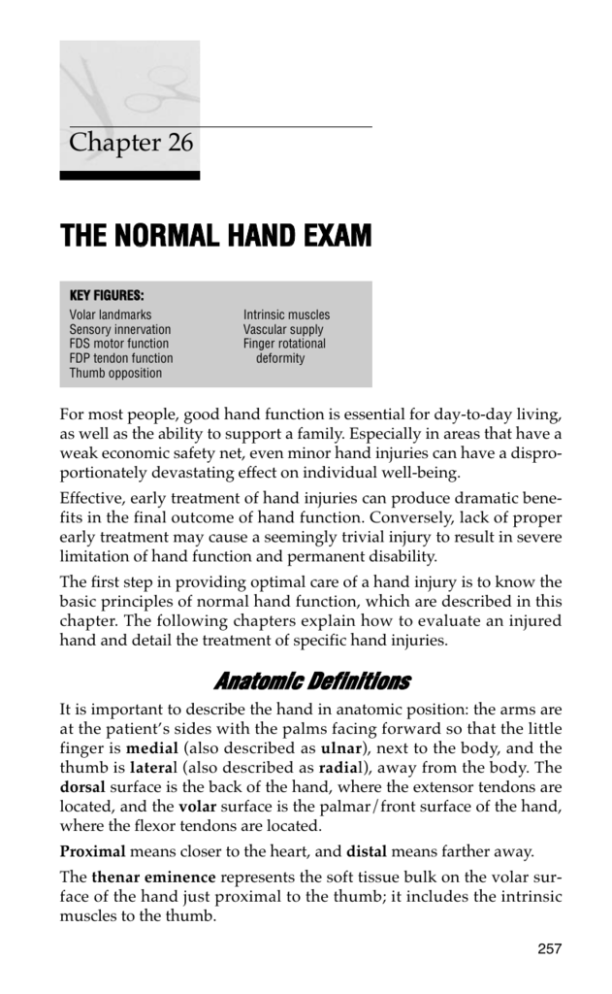
Chapter 26 THE NORMAL HAND EXAM KEY FIGURES: Volar landmarks Sensory innervation FDS motor function FDP tendon function Thumb opposition Intrinsic muscles Vascular supply Finger rotational deformity For most people, good hand function is essential for day-to-day living, as well as the ability to support a family. Especially in areas that have a weak economic safety net, even minor hand injuries can have a disproportionately devastating effect on individual well-being. Effective, early treatment of hand injuries can produce dramatic benefits in the final outcome of hand function. Conversely, lack of proper early treatment may cause a seemingly trivial injury to result in severe limitation of hand function and permanent disability. The first step in providing optimal care of a hand injury is to know the basic principles of normal hand function, which are described in this chapter. The following chapters explain how to evaluate an injured hand and detail the treatment of specific hand injuries. Anatomic Definitions It is important to describe the hand in anatomic position: the arms are at the patient’s sides with the palms facing forward so that the little finger is medial (also described as ulnar), next to the body, and the thumb is lateral (also described as radial), away from the body. The dorsal surface is the back of the hand, where the extensor tendons are located, and the volar surface is the palmar/front surface of the hand, where the flexor tendons are located. Proximal means closer to the heart, and distal means farther away. The thenar eminence represents the soft tissue bulk on the volar surface of the hand just proximal to the thumb; it includes the intrinsic muscles to the thumb. 257 258 Practical Plastic Surgery for Nonsurgeons The volar (palmar) surface of the hand. IP = interphalangeal, DIP = distal interphalangeal, PIP = proximal interphalangeal. The hypothenar eminence represents the soft tissue bulk on the volar surface of the hand just proximal to the little finger. The phalanges are the bones of the fingers. The metacarpophalangeal (MCP) joint is the joint where the fingers and thumb join the hand (essentially, the knuckles). The proximal interphalangeal (PIP) joint is the finger joint closest to the MCP joint. The distal interphalangeal (DIP) joint is the finger joint farthest from the MCP joint. The thumb has only the interphalangeal (IP) joint. The carpal tunnel is the space in the center of the proximal palm between the thenar eminence and hypothenar eminence. The nine flexor tendons to the fingers and thumb and the median nerve traverse this tunnel into the hand. The boundaries of the carpal tunnel are bone on the deep, medial, and lateral sides; the roof is the strong transverse carpal ligament (a fascial layer of the hand). Skin creases are landmarks that help to describe where to place an incision or where a lesion on the volar surface of the hand is located. Location often is described in relation to the various skin creases on the volar surface of the hand. The Normal Hand Exam 259 The Normal Hand A good understanding of the normally functioning hand is necessary for adequate evaluation of a hand injury. Seemingly insignificant injuries, such as a simple laceration, may involve damage to more tissue than just the skin. If this additional tissue damage is missed, significant morbidity can result, with a devastating effect on the patient. If you identify an abnormality that may not make sense in light of the injury, there may be another explanation besides trauma. An abnormality may be a normal variant. For example, a patient without a palpable radial pulse may have congenital absence of the radial artery rather than an arterial injury. When these variants occur, they often involve the other hand as well. It is always a good idea to check the other hand for comparison. Sensory Exam Three major nerves are responsible for sensation to the hand: the radial, ulnar, and median nerves. Sensory innervation of the hand. (From Jurkiewicz MJ, et al (eds): Plastic Surgery: Principles and Practice. St. Louis, Mosby, 1990, with permission.) 260 Practical Plastic Surgery for Nonsurgeons Radial Nerve Sensory distribution: dorsal aspect of the radial two-thirds of the hand and thumb; dorsal aspect of the thumb, index, middle, and radial half of the ring finger to the PIP joint. Course in the forearm: the radial nerve runs in the muscles of the dorsal aspect of the forearm and becomes superficial (near the skin) approximately 4–5 cm proximal to the wrist on the lateral border of the forearm. At this site the nerve is especially prone to injury. Ulnar Nerve Sensory distribution: dorsal and volar aspects of the ulnar side of the hand; dorsal and volar sides of the medial half of the ring finger and the entire little finger. Course in the forearm: the ulnar nerve runs deep to the muscles on the medial side of the forearm, adjacent to the ulnar artery in the distal half of the forearm. An injury to the ulnar artery should alert you to test specifically for an ulnar nerve injury. Approximately 8 cm proximal to the wrist, the nerve sends off a sensory branch that travels under the dorsal skin and supplies the dorsal aspect of the hand. Just distal to the wrist, in the hypothenar muscles, it divides into motor and sensory branches. The sensory branches innervate the ulnar side of the volar surface of the hand and become the digital nerves to the little finger and the ulnar half of the ring finger. An injury to the ulnar nerve at the wrist should not result in diminished sensation to the dorsal aspect of the hand. The sensory branch comes off the main nerve proximal to the injured area. If all ulnar sensation is missing, look for an additional, more proximal injury. Median Nerve Sensory distribution: volar aspect of hand and fingers from the thumb to the radial half of the ring finger; dorsal aspect of index, middle, and radial half of the ring finger from the PIP joint to the tip of the finger. Course in the forearm: at the elbow, the median nerve is next to the brachial artery. It then runs deep to the volar forearm muscles in the upper part of the forearm but becomes quite superficial in the distal third of the forearm. The palmaris longus tendon, if present (it is absent in 10–15% of people), is just overtop of the nerve and offers some protection near the wrist. The nerve then goes through the carpal tunnel to give off its sensory and motor branches in the hand. The sensory branches become the digital nerves to the thumb, index finger, long finger, and radial half of the ring finger. The Normal Hand Exam 261 Motor Exam Many people do not realize that a large part of hand and finger movement is governed by muscles and tendons originating in the forearm. To move the hand and fingers requires proper functioning of both muscles originating in the forearm (extrinsic muscles) and muscles originating in the hand itself (intrinsic muscles). If limitation in movement is due to dysfunction of an extrinsic muscle, you must determine whether the injury involves the distal tendon or the nerve supply. Dysfunction of the intrinsic muscles usually is due to an injury to the nerve supply. If the hand or fingers do not flex (bend) or extend (straighten) appropriately and with adequate strength compared with the noninjured hand or fingers, you must determine the precise cause so that appropriate treatment can be given. This process is detailed and methodical. However, with practice and an understanding of what you are testing, the motor exam takes only a few minutes to complete. Extrinsic Muscle/Tendon Evaluation The flexor digitorum superficialis (FDS) inserts into the middle phalanx of each finger. It is tested by blocking the finger MCP joint and asking the patient to flex the PIP joint. To block the MCP joint, hold the proximal phalanx in extension just distal to the MCP joint, so that the MCP joint is unable to bend when the patient tries to flex the finger. Testing flexor digitorum superficialis function. 262 Practical Plastic Surgery for Nonsurgeons The flexor digitorum profundus (FDP) inserts into the distal phalanx of each finger. It is tested by blocking the finger PIP joint and asking the patient to flex the DIP joint. To block the PIP joint, hold the middle phalanx in extension just distal to the PIP joint, so that the PIP joint is unable to bend when the patient tries to flex the finger. Testing flexor digitorum profundus function. The flexor pollicis longus (FPL) is the primary flexor of the thumb interphalangeal (IP) joint. It is tested by holding the thumb MCP joint in extension and asking the patient to flex the thumb IP joint. The wrist flexors include the flexor carpi radialis, flexor carpi ulnaris, and palmaris longus (PL; weak effect). When the patient flexes the wrist, you should be able to feel these tendons under the skin. In a small percentage of the population, the PL is absent. Compare with the uninjured hand. The extensor pollicis longus (EPL) is the primary extensor of the thumb IP joint. Test the patient’s ability to extend the thumb IP joint. The finger extensors are responsible for extension of the MCP joints of the fingers (not thumb). Please note: the finger extensors are not responsible for extension of the the finger IP joints, which is the function of the intrinsic muscles (see ulnar nerve below). The wrist extensors are the extensor carpi radialis and extensor carpi ulnaris. Check function by testing for wrist extension. The Normal Hand Exam 263 Evaluation of Extrinsic Muscle/Intrinsic Muscle Nerve Supply Radial Nerve Hand: no motor innervation to the intrinsic muscles. Forearm: innervates the forearm muscles that provide extension of the wrist, thumb, and all finger MCP joints. Median Nerve Hand: primarily thumb opposition (bringing the thumb tip to meet the tip of each finger). Forearm: innervates the muscles that flex the thumb, wrist (FCR), all PIP joints, and DIP joints of the index and middle fingers. To test function of the motor branch of the median nerve, bring the thumb and little finger together in opposition. Keep the thumb IP joint at 0° so that you do not confuse action of the flexor pollicis longus with action of the thenar muscles. Ulnar Nerve Hand: the ulnar nerve provides the dominant innervation to the intrinsic muscles of the hand: flexion of the MCP joints and extension of the IP joints of the fingers and adduction of the thumb. It is best to check the first dorsal interossei (the muscle along the index metacarpal bone in the thumb web). Ask the patient to abduct the index finger against resistance. Alternatively, you may ask the patient to hold a piece of paper between adjacent fingers that are fully extended. Forearm: innervates the muscles that flex the wrist (flexor carpi ulnaris) and DIP joints of the ring and little fingers. 264 Practical Plastic Surgery for Nonsurgeons Metacarpophalangeal joint flexion and interphalangeal joint extension. The intrinsic muscles are innervated primarily by the ulnar nerve. Vascular Evaluation Two main arteries supply the hand: the radial artery and the ulnar artery. Both are branches of the brachial artery. In the hand the radial artery and ulnar artery come together and meet, forming the palmar arch. The digital arteries come off the palmar arch to supply circulation to the fingers. Radial Artery Most people are familiar with the radial artery, which health care providers palpate to check heart rate. The radial artery usually can be felt on the lateral aspect of the volar surface of the wrist, just below the thenar eminence. Check for presence of a pulse, and compare with the other side. In some patients anatomy varies from the norm, and this variance is often symmetrical. Always check the opposite hand. Ulnar Artery The ulnar artery is actually the more important of the two arteries supplying circulation to the hand. It usually supplies most of the blood to the hand. The ulnar artery can be felt on the medial aspect of the volar surface of the wrist, just below the hypothenar eminence. It is often more difficult to feel than the radial artery pulse. Check for presence of a pulse, and compare with the other hand. The Normal Hand Exam 265 Blood supply to the hand. The superficial arch and the deep arch are separated by tendinous structures. The superficial arch is formed primarily by the ulnar artery, the deep arch by the radial artery. This arrangement is seen in most, but not all dissections. (From Jurkiewicz MJ, et al (eds): Plastic Surgery: Principles and Practice. St. Louis, Mosby, 1990, with permission.) Capillary Refill A well-vascularized finger generally has a pink hue under the nail. If the area under the nail is blue or very pale, circulation may be impaired. These findings also may be a sign that the patient is very cold or hypovolemic; be sure to compare with the uninjured hand. To test capillary refill, pinch the fingertip, which should blanch (i.e., turn pale). Then release the pressure. The color should return to normal within 2–3 seconds. A period longer than 2–3 seconds may imply an arterial injury (i.e., difficulty with getting blood to the finger). A period shorter 266 Practical Plastic Surgery for Nonsurgeons than 2–3 seconds may imply a problem with the venous circulation (i.e., difficulty with draining blood from the finger). Alignment of the Fingers with Movement You should evaluate the patient for a rotational deformity of the finger, which indicates significant bone or joint injury. When the patient actively flexes the finger IP joints in tandem, the nails and fingertips should be well aligned. When MCP flexion is added, the fingers should not criss-cross; they should point gently toward the thenar eminence. As always, compare with the other hand because some people may have mild rotational deformities in the uninjured state. Left, Normally all fingers point toward the region of the scaphoid when a fist is made. Right, Malrotation at fracture site causes the affected finger to deviate. (From Crenshaw AH (ed): Campbell’s Operative Orthopedics, 7th ed. St. Louis, Mosby, 1994, with permission.) This evaluation is important in examining a patient with a phalangeal or metacarpal fracture. At rest, with the fingers straight, the fingers may look well positioned. However, when their alignment is checked with motion, the fingers may criss-cross, which suggests that the fracture requires greater reduction. If the fracture is not reduced properly and the rotational deformity becomes permanent, hand function may be limited. Bibliography 1. Ariyan S: The Hand Book. New York, McGraw-Hill, 1989. 2. Lampe EW: Clinical Symposia: Surgical Anatomy of the Hand. 40th anniversary issue 40(3), 1988.
